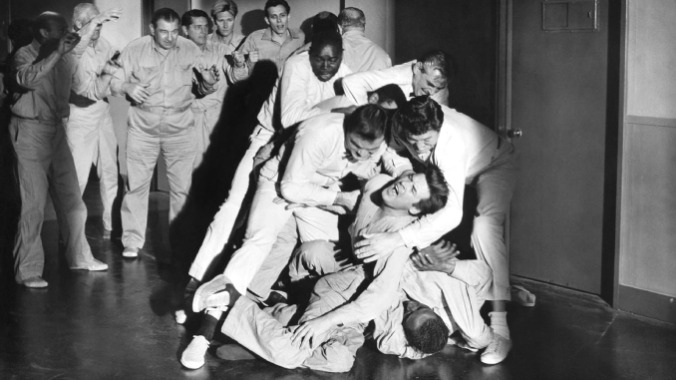Film School: Shock Corridor
Subscriber Exclusive

Welcome to Film School! This is a column focused on movie history and all the stars, filmmakers, events, laws and, yes, movies that helped write it. Film School is a place to learn—no homework required.
Despite some wrong-headed politicians, misguided wars, and small-minded laws, I love my country. Nothing and nobody can take it away from me. But goddamit, this nation gives me ulcers sometimes!—Samuel Fuller, A Third Face
Sam Fuller’s most renowned movie of the 1960s had its roots back in the ‘40s. It started life as a film Fuller, who began his Hollywood career penning screenplays for other directors, had written for Fritz Lang—Straitjacket, as it was originally titled, was to be a searing expose of the shocking quality of care that mentally ill patients were receiving in institutions across America.
That version didn’t pan out, but the idea stayed with Fuller throughout the Cold War ‘50s, and into the beginning of the notoriously fraught ‘60s. As the years passed, the idea expanded beyond an indictment of America’s mental health care system to include [as listed in Fuller’s autobiography], “racism, patriotism, nuclear warfare, and sexual perversion.” This is the film that would be known as Shock Corridor.
In the movie, Pulitzer-hunting journalist Johnny (Peter Breck) decides to feign incestuous urges towards his “sister” in order to get himself committed to a mental asylum that was the recent site of an unsolved murder. By interviewing three patients who were witnesses to the crime, he hopes to discover the killer. His girlfriend Cathy (Constance Towers), reluctantly plays along, pretending to be his sister. As it turns out, however, the closer Johnny gets to unveiling the murderer, the looser his grip on his own sanity becomes.
Shock Corridor is perhaps the finest example of Sam Fuller’s perpetual battle between lurid sensationalism and a genuine passion for the messages he wanted to convey.
-

-

-

-

-

-

-

-

-

-

-

-

-

-

-

-

-

-

-

-

-

-

-

-

-

-

-

-

-

-

-

-

-

-

-

-

-

-

-

-








































